Not so long ago we couldn’t wait to tear down old buildings and replace them with anonymous structures made of glass and steel. But as history started to disappear, older buildings were saved. Visionary developers kept the best of the past and added fresh design elements with a dash of eco-friendliness. Here are some of Canada’s most interesting examples of adaptive reuse.
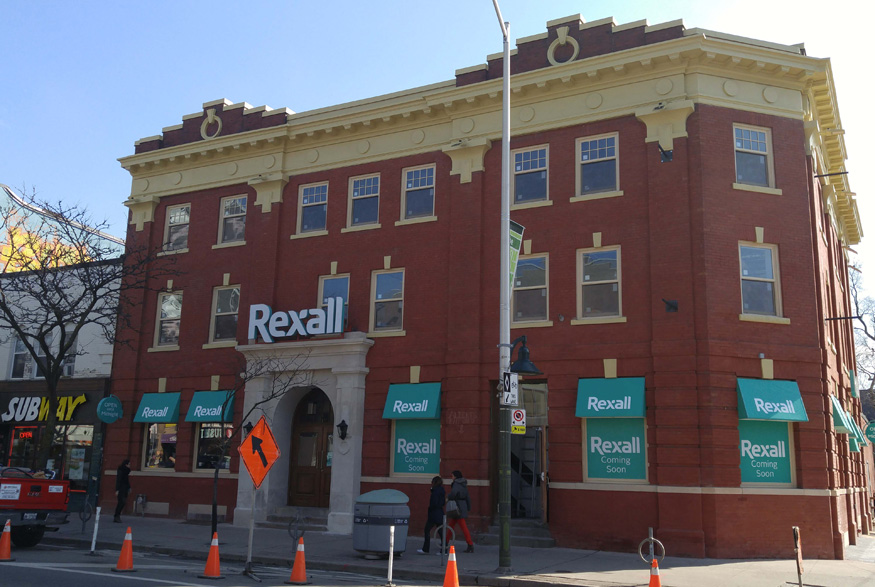
Brunswick House, Toronto
In its past life, Brunswick House was a well-known watering hole and live music venue. Located in The Annex in Toronto, the building dates back to 1874. When ‘Ye Olde Brunswick House’ closed in 2016, it was the end of one of the oldest pubs in the city. Rexall took over the space for a new pharmacy that still retains the spirit of the ‘Brunny’.
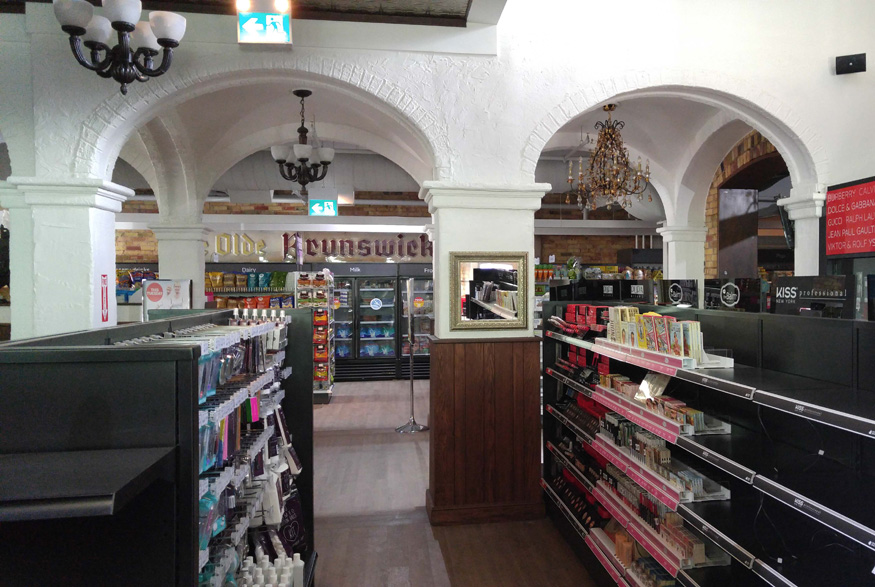
Brunswick House, Toronto
Rexall worked with Toronto’s Heritage Preservation Service during the renovation. The building’s outdoor façade and interior elements were preserved. The old keg barrel bar was retained and is now used as the store’s checkout area. Chandeliers, tin ceilings and signage were kept as well, with a nod to the building’s musical past.
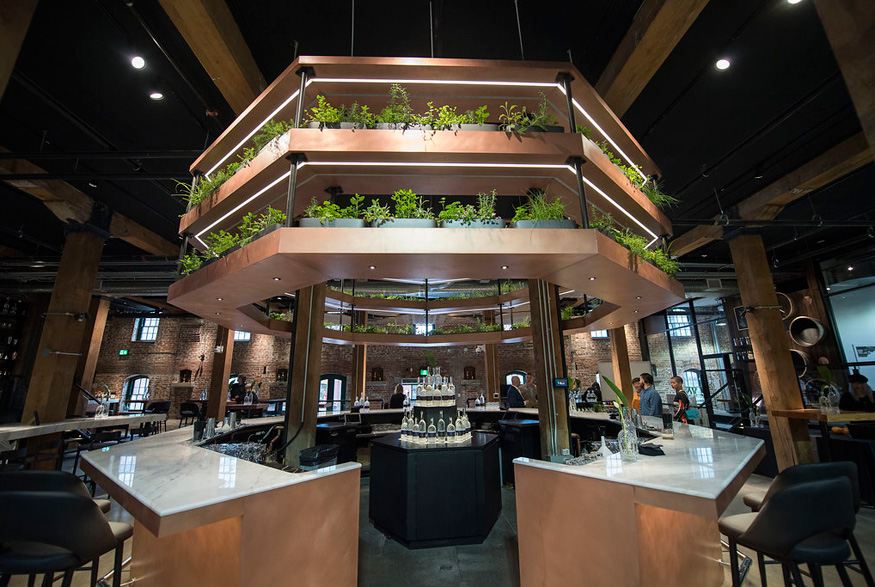
Spirit of York Distillery, Toronto
The Spirit of York Distillery in Toronto recently opened in a heritage building that was once used by Gooderham & Worts for malting.
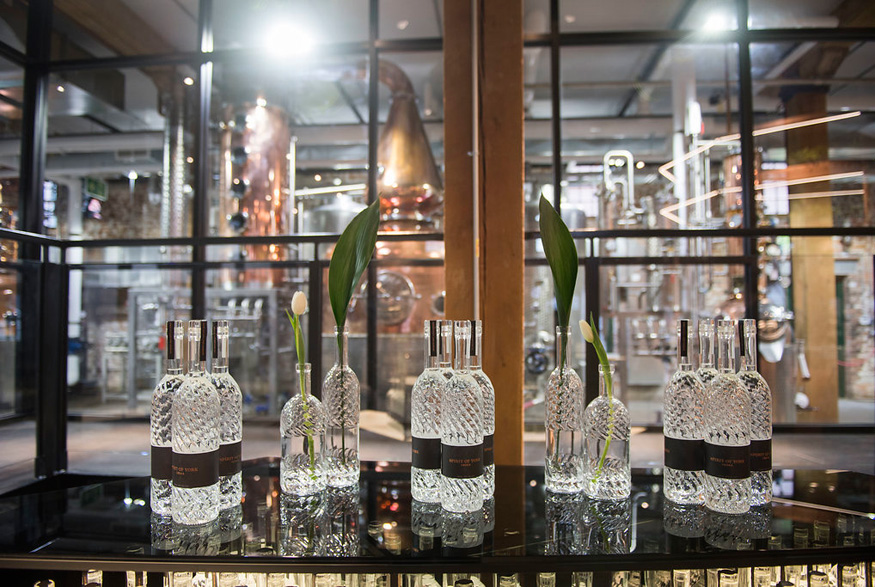
Spirit of York Distillery, Toronto
The transformed building features exposed brick, distillation equipment and an interesting mash-up of old and new.
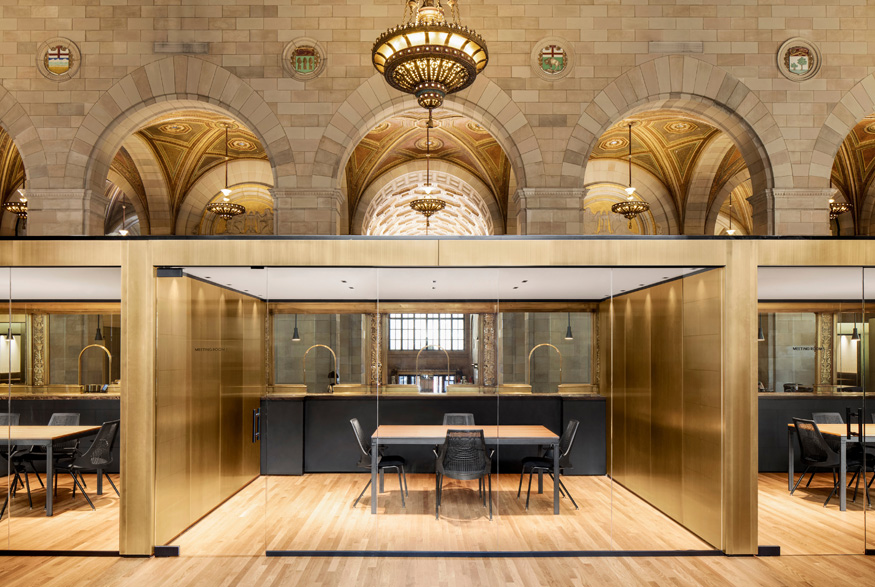
Crew Collective Offices and Café, Montreal
The Crew Collective and Café is located in one of Montreal’s beautiful old bank buildings. This was the main hall of the Royal Bank tower and it dates back to 1926.

Crew Collective Offices and Café, Montreal
Today, it’s one of Montreal’s coolest coffee shops with 15-metre ceilings and the magnificence of a bygone age. The lighting is custom designed as are other elements. In addition to the public coffee shop area, Crew has its offices and shared working spaces here.
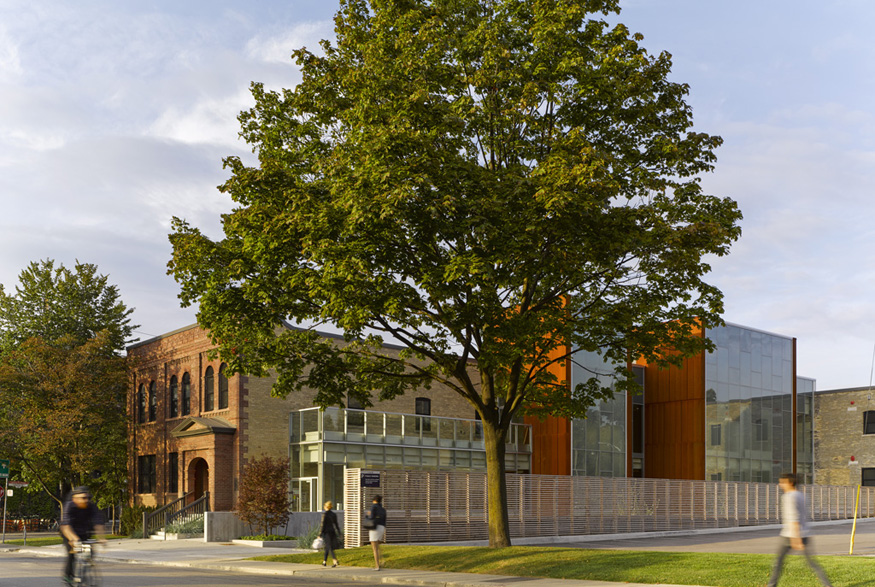
60 Atlantic Avenue, Toronto
60 Atlantic Avenue in Toronto’s Liberty Village is an adaptive reuse project in what was a traditionally industrial area of the city. The building was originally a large warehouse, built in 1898 for St. David’s Wine Grower’s Company. In 1922 the warehouse was acquired by Eaton’s Department Store. In the 90s it was converted into an artist space.
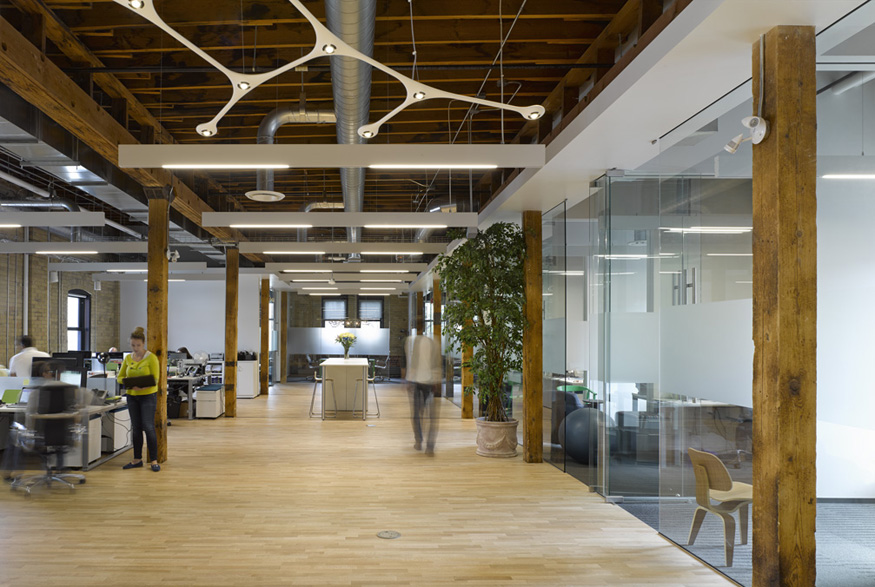
60 Atlantic Avenue, Toronto
The architecture and interior design team from Quadrangle were brought in rethink building. The goal: a vibrant neighbourhood hub. It was cleaned and reinforced and the old basement turned into a courtyard. The upper levels house studio and office spaces with original brick walls, heavy timber beams and high ceilings.
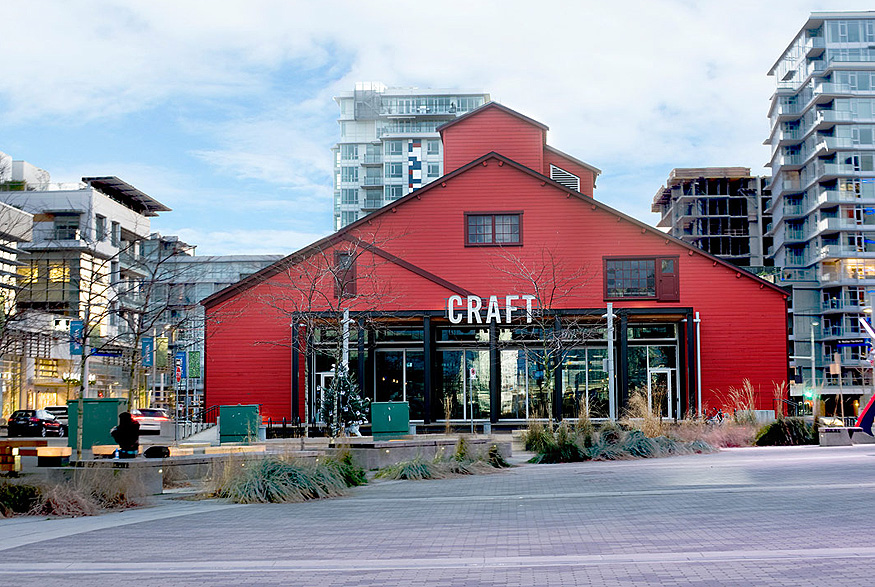
Salt Building/CRAFT Beer Market, Vancouver
The Salt Building dates back to the 1930s when it was the Vancouver Salt Company’s processing plant. In the decades that followed, it fell into disrepair. It was renovated prior to the Vancouver 2010 Olympics for use as an athlete hangout.
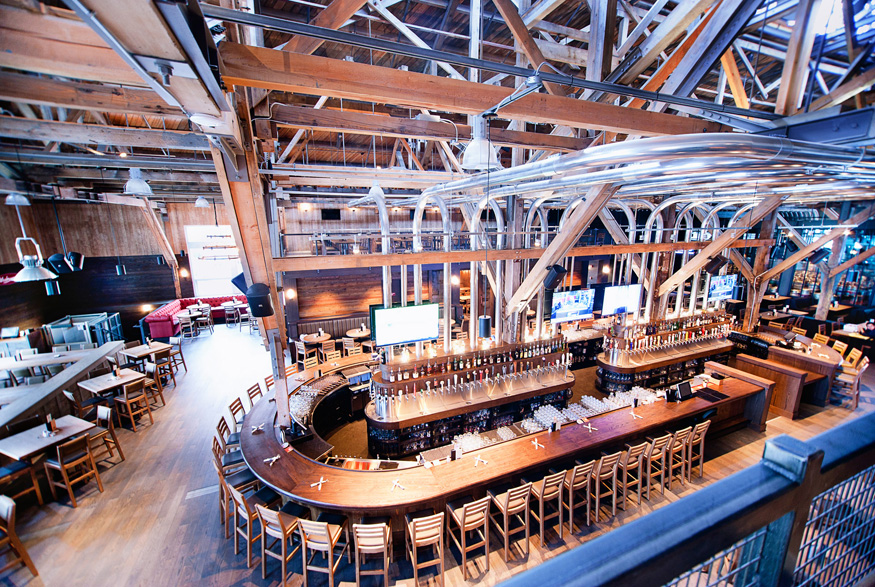
Salt Building/CRAFT Beer Market, Vancouver
In 2013 the Salt Building became the 350-seat CRAFT Beer Market, a thriving bar and restaurant in the Olympic Village area. The building holds LEED Gold certification.

Evergreen Brick Works, Toronto
Evergreen Brick Works is an abandoned brick factory turned community hub in Toronto. It dates back to the 1880s when it was known as the Don Valley Brick Works. In 2010, Evergreen Brick Works became Canada’s first large-scale community environmental centre.

Evergreen Brick Works, Toronto
It’s a place where people can experience sustainable practices that enable the cities of the future. Evergreen Brick Works is the first of its kind in Canada to target carbon neutrality. Work continues on other buildings in the complex, including a retrofit of the kiln building.
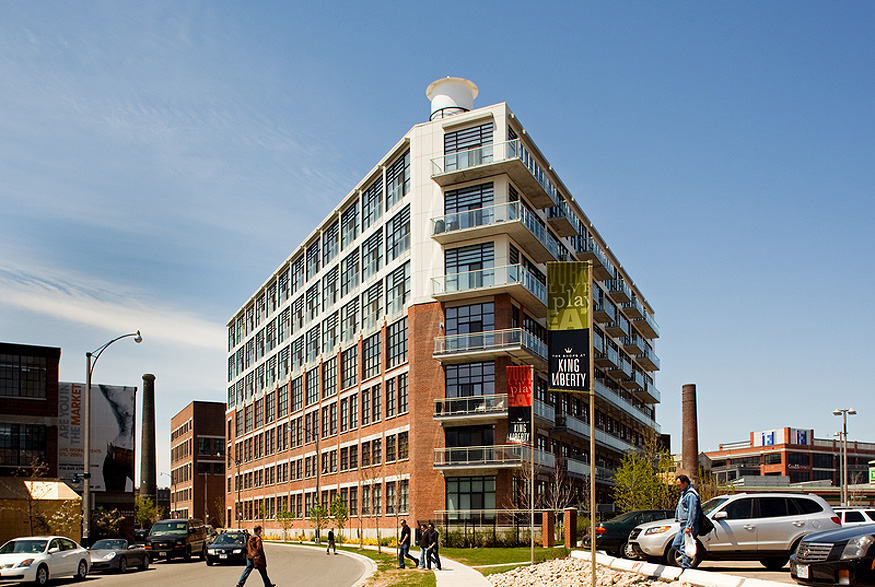
Toy Factory Lofts, Toronto
The former Irwin Toy factory in Toronto combines live/work units with commercial space. The condition of the original structure varied dramatically, resulting in a re-development that included selective demolition with reconstruction and renovations.

Toy Factory Lofts, Toronto
The Quadrangle-designed project retained many original elements from the old factory. The Toy Factory Lofts were completed in 2007 and have won several design awards.
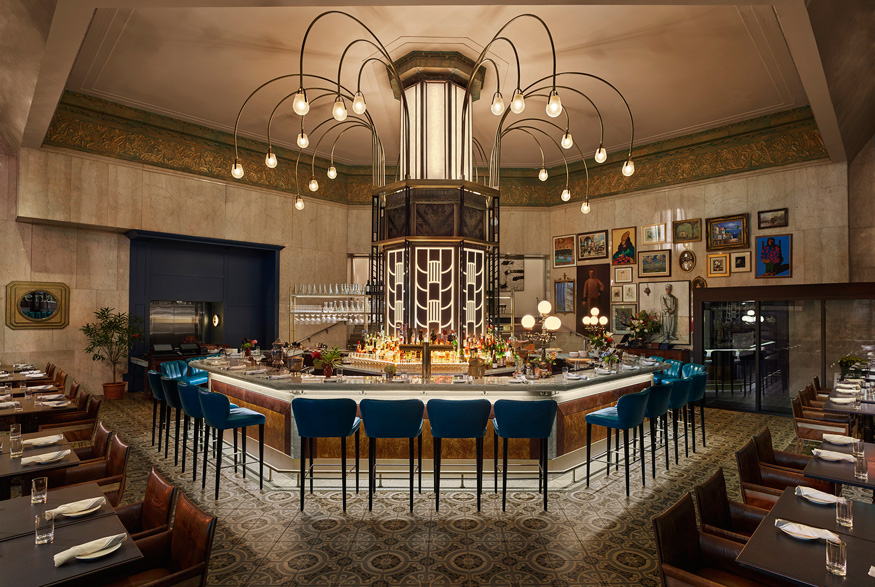
Leña Restaurante, Toronto
Located at the Saks Fifth Avenue store in the former Hudson Bay store at Queen St. and Yonge St. in Toronto, Leña Restaurante features a variety of interiors, all paying tribute to the historic setting. Designed by DesignAgency, the main bar floor is in the former store lobby, constructed around a deco pillar of backlit, etched glass. The gallery wall features paintings of Canadian artists.

Leña Restaurante, Toronto
The lower-level lounge is accessed via the original art deco staircase. Soft lighting and leathers, velvets and patterned flooring add to the ambiance.
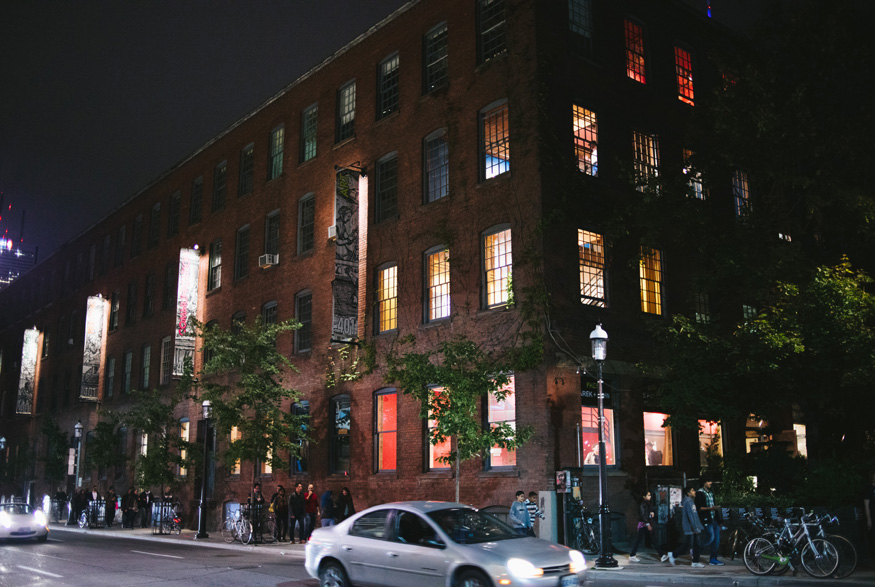
401 Richmond, Toronto
More than 140 cultural producers and enterprises call 401 Richmond home. The historic warehouse was originally the location of the Macdonald Manufacturing Company, a tin lithography factory that operated at the turn of the century.
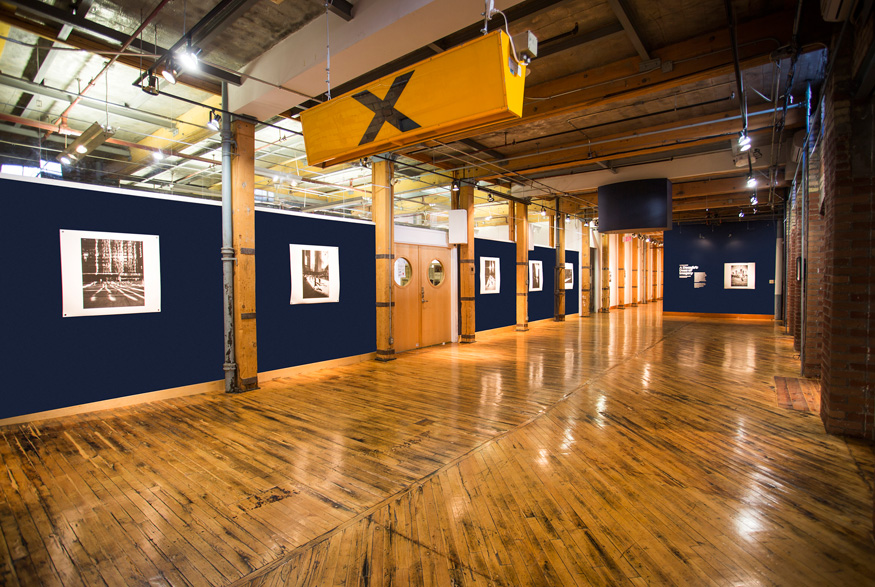
401 Richmond, Toronto
The building was redeveloped by the Zeidler Family after they purchased it in 1994. The building went from more than half empty to a fully-leased cultural and commercial centre. In 1999 401 Richmond won the Award of Merit from Toronto Heritage for outstanding adaptive re-use of a historic building. It received Heritage Designation in April 2007.
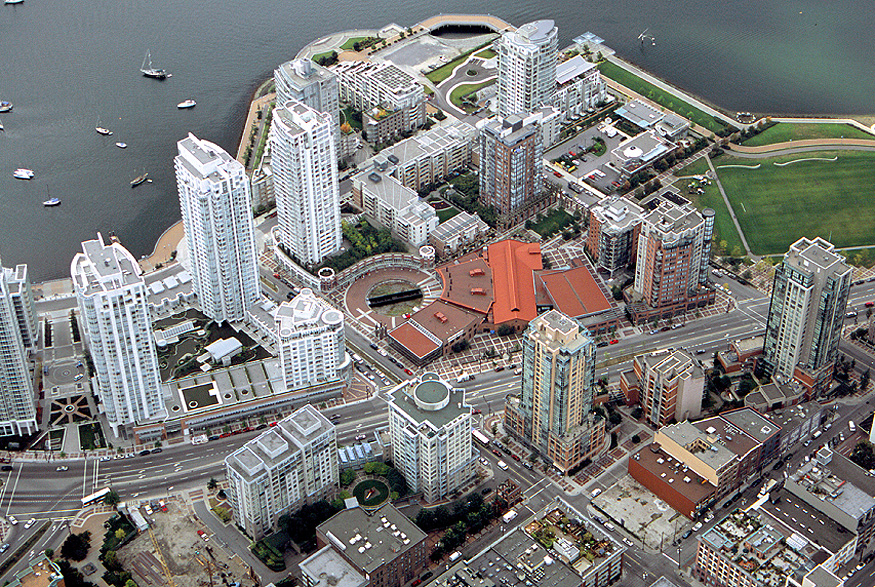
Roundhouse Community Arts and Recreation Centre, Vancouver
Vancouver’s Roundhouse dates back to 1887 and it was originally part of a group of buildings where steam locomotives were serviced. As steam locomotives disappeared from use, the Roundhouse was all but forgotten – but for a shining moment during Expo 86. In 1993 plans were made to turn it into an arts-orientated community centre.

Roundhouse Community Arts and Recreation Centre, Vancouver
Today the Roundhouse is an important part of Vancouver, featuring a performance centre, exhibition hall, pottery and dance studios, a gym, cafe and multi-purpose spaces. The Roundhouse also houses Engine 374, from the first passenger train to enter Vancouver in 1887.
HGTV your inbox.
By clicking "SIGN UP” you agree to receive emails from HGTV and accept Corus' Terms of Use and Corus' Privacy Policy.





